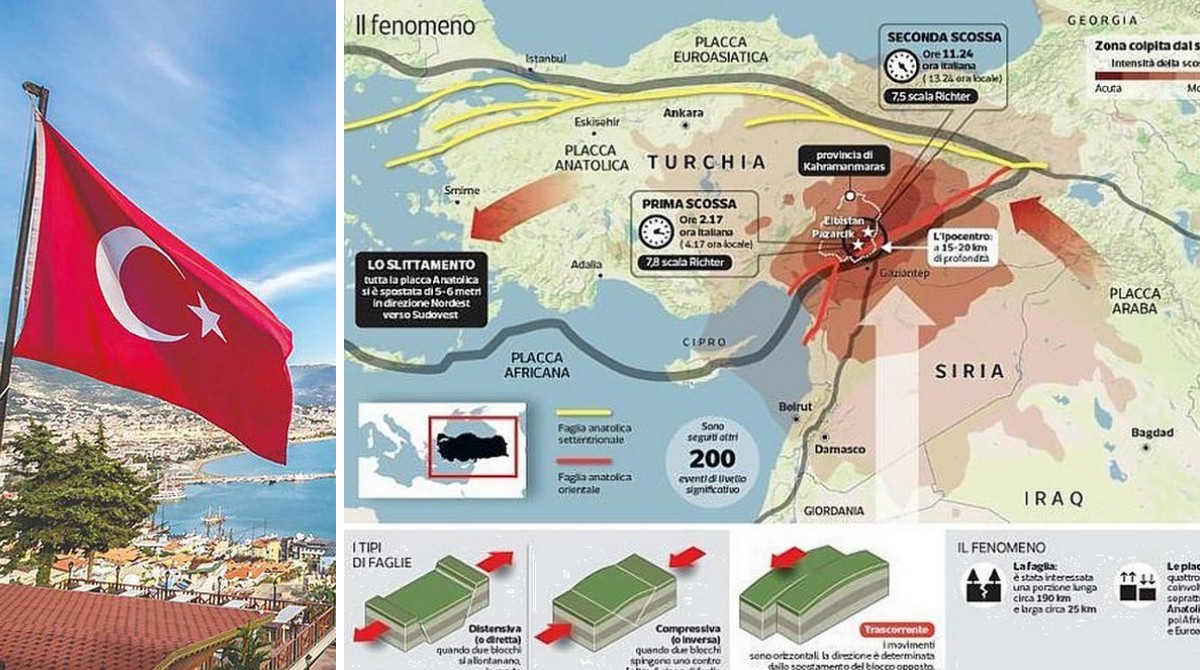“Is Antalya at risk of the next earthquake?” – This question of the alarmed Turkish public and tourists was answered by Turkish scientists on the pages of the local publication Gun Haber. The answer, unfortunately, is not very comforting – it is included, albeit “second in line”. Antalya is included in the 110 dangerous areas on the seismic fault line in Turkey.
This was stated by professor-geologist Okan Tuysyuz. He called the most seismically risky region in Antalya – Demre district with the city of the same name, located between Kemer and Fethiye.
Turkish experts also presented a map of faults and, accordingly, the riskiest regions from the point of view of seismic danger. It must be said that some tourist provinces are included in the regions with the first degree of earthquake risk. Antalya and Istanbul, whose earthquake also scares forecasters, are named among the regions of the second degree of risk.
The complete list of provinces by risk level is as follows:
- The first level of earthquake risk (note that the list includes all the victims in the February disasters of the province): Izmir, Balikesir, Manisa, Mugla, Aydin, Denizli, Isparta, Ushak, Bursa, Bilecik Yalova, Sakarya, Duzce, Kocaeli, Kirsehir, Hatay, Bartin, Cankiri, Tokat, Amasia, Canakkale, Erzincan, Tunceli, Bingol and Mush, Hakkari, Osmania, Kirikkale and Siirt.
- The second degree of earthquake risk: Tekirdag, Istanbul (1st and 2nd districts), Bitlis, Kahramanmaras, Van, Adiyaman, Şirnak, Zonguldak, Afyon, Antalya, Samsun, Kars, Erzurum, Batman, Ardahan, Igdir, Adana, Diyar, Malatya, Eskisehir, Kutahya, Ushak, Agri, Korum.
And according to the head of the branch of the Chamber of Geological Engineers (JMO), geophysicist Bayram Ali Celtyk, in the past Antalya also has tragic events associated with strong earthquakes and human casualties, so “it is clear that they will take place in the resort strip in the coming years.” “The fault line has ‘not moved’ for 500 years, but things can change.” It may be a seismic rupture. Today we see what this has led to. We have similar gaps in Antalya, Aksu, Korkutel, Doshemealt. In our bay (Antalya) there is a subduction zone (a linear zone on the border of lithospheric plates, along which some blocks of the earth’s crust sink under others, the result of their interaction is strong earthquakes in this zone). But we don’t know when the earthquake will happen,” said the geophysicist.
At the same time, the risk of catastrophic landslides does not threaten the center of the resort town, but its periphery — the 640-kilometer coastline, on which hotels, resort villages, and local settlements are concentrated. “Earthquakes in Hataya, Adiyaman, Kahramanmarash showed us that soil liquefaction is catastrophic. At the moment of an earthquake, the earth behaves like water, loses its capacity and collapses. It also increases the effects of an earthquake. In particular, Demre, Finike, Kemer, Manavgat, Serik, Alanya – all these areas are near the sea, you dig a meter or two and water comes out of the ground. These are places built on alluvial soil, and therefore a significant destructive effect from an earthquake is expected there,” he added.
In other words, powerful shocks in combination with washed-out soil is a “sentence” for resort towns. Antalya may become the worst version of Kahramanmaraş due to the earthquake it just experienced. “Our soil is many times worse than in Kahramanmarash, the height of the buildings is also different. This means a lot of destruction in a smaller earthquake. There were strong earthquakes in the history of the province. According to historical data, a magnitude 8 earthquake occurred southwest of us. Near us is the Fethiye-Burdur fault zone. Until recently, it produced very strong earthquakes. It is obvious that even because of this fault movement there will be human casualties and the collapse of buildings,” the expert warned.

